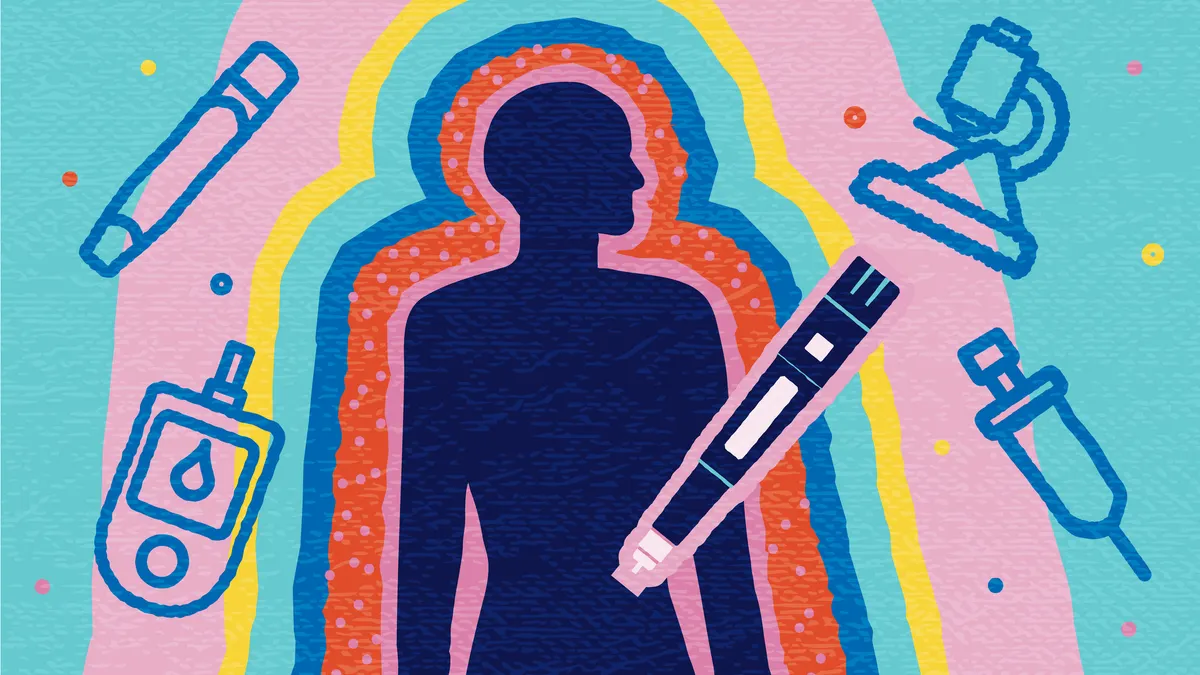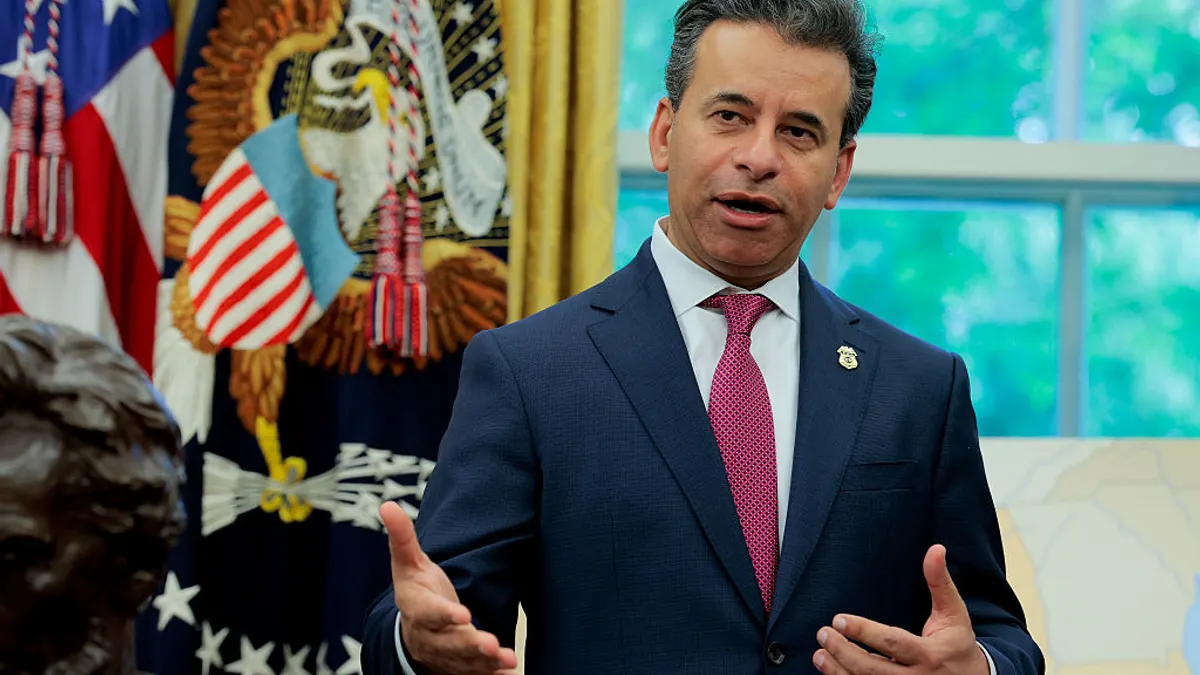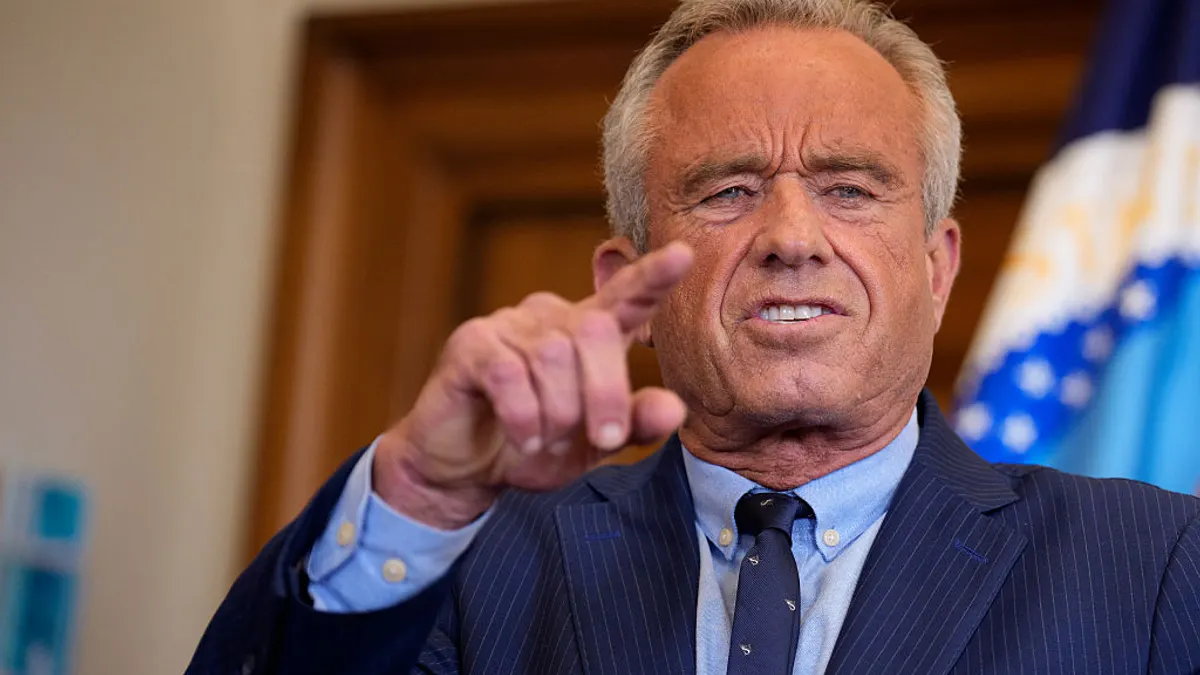The GLP-1 market is on fire. And as Eli Lilly and Novo Nordisk struggle to meet soaring demand, the window is open for new versions of the popular drugs. To compete with the weekly injectables, some biotechs are turning to pills for a new angle.
One oral GLP-1 already exists on the market. Novo Nordisk won FDA approval for its semaglutide tablet Rybelsus in 2019 as a Type 2 diabetes drug, gaining a label expansion last year as an initial treatment to lower blood sugar levels. While Rybelsus has the same active ingredient as Ozempic (semaglutide), its uptake has paled in comparison to Ozempic and Wegovy, despite oral doses having a similar effect as injectable versions, according to a 2021 review of seven studies.
But Rybelsus is still objectively a huge hit, accounting for 14% of the GLP-1 market share by the end of 2023, Camilla Sylvest, executive vice president of commercial strategy and corporate affairs, said during the company’s end-of-year earnings call in January. Rybelsus raked in about $2.7 billion in sales for Novo last year, compared to almost $14 billion in Ozempic sales.
Rybelsus’ market share has not deterred other pharma and biotech companies from racing to get their own oral GLP-1 across the clinical finish line. As many as 1 in 8 American adults have taken a GLP-1 agonist, according to a recent KKF poll, and J.P. Morgan analysts predict the GLP-1 market will tip $100 billion by 2030 as the appetite for the medications only continues to grow.
Cost is another consideration when comparing oral and injectable GLP-1s. With a list price over $1,000, Rybelsus is on par with Ozempic and Wegovy. As more weight loss drugs flood the market, however, prices could be forced lower.
Injectables are harder to manufacture and need to be kept cold. Meanwhile, some users may be squeamish about injecting medication and prefer a pill. And with a handful of drugs moving into mid- and late-stage studies, it’s likely some of these candidates will be available in the next few years. While the convenience factor may give oral GLP-1s an edge, pharma companies need to show their candidates are just as effective or better than what’s out already on the market.
Here are five noteworthy oral GLP-1s in the pipeline.
Lilly’s orforglipron
Clinical stage: Phase 3
The road to approval: Lilly is enrolling patients into a phase 3 study with results expected in 2025. If the drug proves to be safe and effective, the company expects to launch it “maybe a year after that,” CEO Dave Ricks said during the company’s latest earnings call. The company published phase 2 results last year, finding participants lost weight and lowered their A1C, a marker of diabetes, compared to a placebo group. The drug is among the most valuable R&D projects, according to Evaluate, which pegged the net present value of orforglipron at $13 billion in a report at the beginning of the year.
However, the drug isn’t as effective as injectable semaglutide, according to a 2023 study published in the New England Journal of Medicine.
“This once-daily oral formulation is effective only when taken 30 minutes before breakfast, and the approved dose (14 mg) is less effective for weight reduction than the approved dose of injectable semaglutide,” wrote first author Dr. Sean Wharton, medical director of the Wharton Medical Clinic.
When asked how Lilly will overcome manufacturing constraints for orforglipron, Ricks said the drug is complicated to produce, but also that it doesn’t require as much buildout as its injectable products.
Roche’s CT-996
Clinical stage: Phase 1
Road to approval: Roche jumped into the GLP-1 market with a $2.7 billion acquisition of Carmot Therapeutics that closed in January. If the phase 1 study of its oral GLP-1 dubbed CT-996 meets its endpoints, Carmot plans to launch two phase 2 studies — one in obesity and the other for Type 2 diabetes.
While its oral product is still years from potentially entering the market, Roche is closer to the finish line with a once-weekly injectable GLP-1 from Carmot, CT-388. Phase 1 study results revealed CT-388 helped participants drop an average 19% of their body weight over six months. Carmot has plans for a phase 2 trial in participants with obesity and a second trial in Type 2 diabetes. Roche’s shareholder value has risen alongside the news, and the company hopes the drug and pipeline will help the company elbow into the lucrative space alongside Lilly and Novo.
Viking Therapeutics’ VK2735
Clinical stage: Phase 2 planned for 2024
Road to approval: Earlier this year, Viking announced results from a phase 1 trial of its dual GLP-1 and glucose-dependent insulinotropic polypeptide receptors agonist VK2735. The drug stands out among other oral weight loss candidates with its added GIP receptor target, and the study showed weight loss and tolerability among participants, with more weight loss at higher doses — 57% of participants taking a higher dose of VK2735 achieved greater than 5% weight loss compared to the placebo group after 28 days.
News of the results in March coincided with a rise in Viking Therapeutics’ share price by more than 25%, underscoring the perceived value in the weight loss market. Viking also announced it was moving ahead with a phase 2 trial later in 2024 with longer treatment windows and potentially higher doses.
Pfizer’s danuglipron
Clinical stage: Phase 2
The road ahead: In December, Pfizer announced results from a phase 2b of danuglipron, showing that while the study met its primary endpoint of significant body weight reduction, the company decided not to move forward with the twice-daily dose of the drug candidate, citing discontinuation rates over 50%. A significant number of participants experience gastrointestinal side effects from the drug, including 73% with nausea, up to 47% with vomiting and up to 25% with diarrhea. Despite the bad news, Pfizer’s GLP-1 journey isn’t over. The company is still moving forward with clinical trials of a once-daily dose of danuglipron.
“We believe an improved once-daily formulation of danuglipron could play an important role in the obesity treatment paradigm, and we will focus our efforts on gathering the data to understand its potential profile,” Dr. Mikael Dolsten, chief scientific officer and president of R&D at Pfizer, said in December.
The trial bust follows another blow to Pfizer in its weight loss pursuits after the company stopped testing another oral GLP-1, lotiglipron, last year after study results indicated liver toxicity from the drug.
AstraZeneca’s ECC5004
Clinical stage: Phase 2
The road ahead: AstraZeneca has had a handful of GLP-1 candidates in its pipeline over the last few years, but not all have found their footing — the company shelved two GLP-1 candidates last year.
Its most notable candidate comes from a licensing agreement with Eccogene last year for an investigational oral once-daily GLP-1 called ECC5004. AstraZeneca paid $185 million upfront, plus another $1.8 billion in future clinical, regulatory and commercial milestones and royalties. AZ may be banking on the drug’s potential for fewer gut side effects compared to competitors. AZ CEO Pascal Soriot said late last year that phase 2 trials would start in the coming months.





















